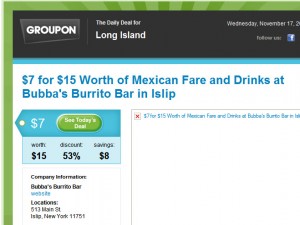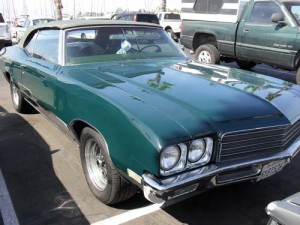Coupons pollute the social stream.
In the future, Groupon will be a powerhouse. (Right now it’s a power hose.)
My first email from Groupon arrived yesterday promoting Bubba’s Burrito Bar in not too far away Islip, NY. Bubba’s offered me $7 off a purchase of $15. I clicked through but the link was broken. Stoked, because I’d been to Bubba’s and liked it very much, I wrote them a note about the link faux pas certainly will visit them soon, coupon or not.
Today, Groupon emailed me a promotion for America Apparel. Not exactly, where I shop. It’s email number two and already I see an email unsub in my future. So why with this targeting problem do I still expect Groupon to be a winner?
Focus.
Groupon has some things to work out but the idea to encourage “group” promotions and group referral by geography is smart…and gaining traction. Plus this is the right economy to be in the coupon business. I gripe often that marketers are tainting social media by tossing coupons around Facebook and Twitter, etc. It’s too much. Groupon has the potential to be a cure for this boorish behavior. Coupons need to be sequestered but easily found — they do not need to be all over my social media stream. Period.
If Groupon focuses solely on coupons and coupon users, they will evolve; especially if they pioneer the application of the social graph (relationship mapping of social friends) with coupon use and geo-targeting. Groupon will win this category because of focus. And because couponing does not belong in the waters of the social stream. Peace!







